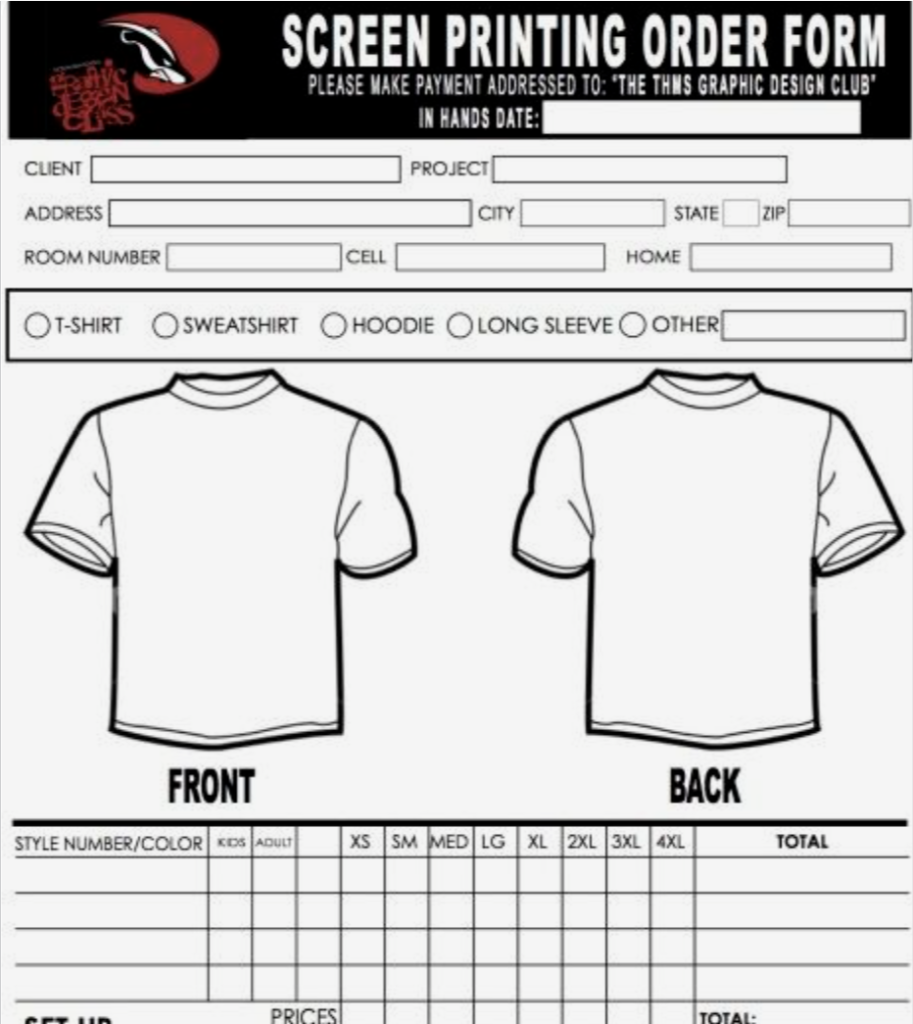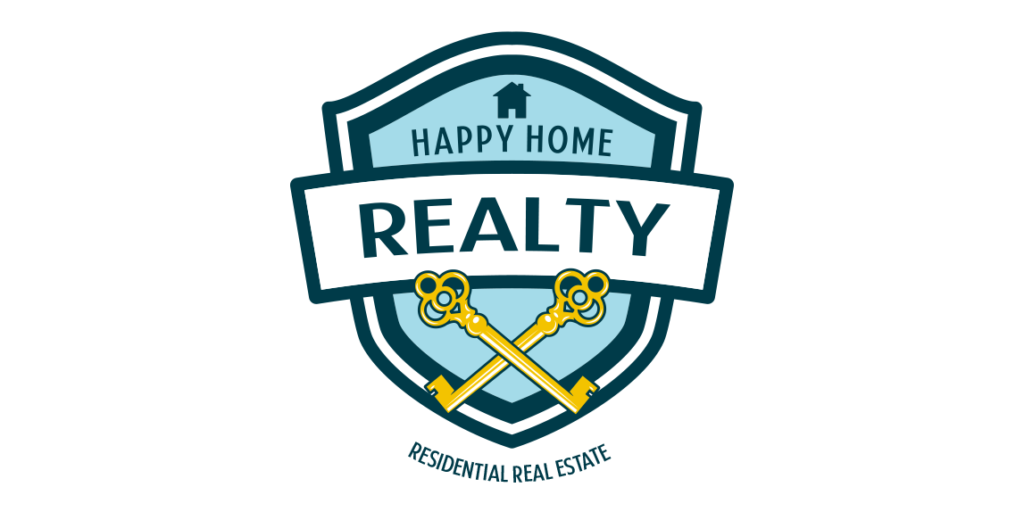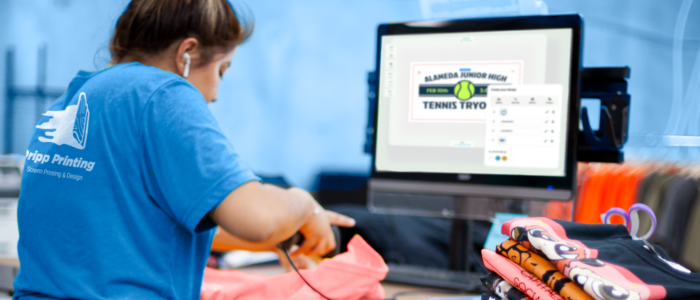Stop focusing on your order form and ask your customer these questions!
BOTTOM LINE UP FRONT: When it comes to printing custom branded merchandise, it’s easy to ask the same humdrum questions during order creation. Use these five questions to truly tap into what your customer wants in their custom printed merchandise order.
What would you like to order today?
You’ve probably heard that phrase dozens of times, maybe more depending on how often you visit your favorite drive-thru fast-food chain. You pick a numbered item off the menu, tell the person at the intercom what you want, and move ahead to pick up your food. Aside from the occasional special request (extra pickles, no lettuce, etc.), there’s generally no real customization involved. It’s a relatively formulaic setup for a reason. It’s designed to move people in and out quickly.
Now let’s think about your business. Custom printed merchandise isn’t the same line of work as running a fast-food drive-thru. But you’re both in the business of getting a customer what they want. And you’re both striving to do it in a reasonable amount of time relative to the product the customer’s paying for.
But here’s where things get very different. When someone orders a burger at the drive-thru, they’re picking it off a pre-configured menu, and most items are already standardized.
When you’re building an order for your customers, it’s a lot more intricate You might have some standard procedures for how you print different types of fabrics or substrates. Still, every customer coming through your doors or contacting you online needs that hoodie, tote bag, keychains, or koozie for a specific application.
Your menu
Depending on the type of shop you run, there are probably a few standard items on your order form. Usually, your “need-to-knows” are:
- Client’s information: core things like billing address, contact information, and primary contact for the order.
- Product type: A long sleeve shirt, a T-shirt, a hoodie, a beanie, or whatever else your business offers in its inventory.
- Color: This usually corresponds with the inks and thread types you stock.
- Size: For apparel decoration, you’ll need to know the variety of required sizes (SM, M, L, XL, etc.)
Quantity: You need an amount for every item in the job order.

These are all humdrum requirements, but what if you could add some more exciting questions to the mix and truly connect with your customers? It requires more conversation with the customer and, yes, more of a time commitment. But if you think of it as an investment to build better designs and retain customers, it’s worth it.
Let’s take a look at five questions to ask your customers that elevate you from “order-taker” to “merch maker.” Combine these with InkSoft’s powerful tools for managing job proposals, and you’ll have a powerhouse at your fingertips.
Question 1: What is the budget for your custom printed merchandise order?
This isn’t the most exciting question to ask your customers, but you need to be comfortable asking it. Suppose your client is a small charity with a very limited or no marketing budget. In that case, setting them up with an elaborate design isn’t realistic. Even if you have rates listed on your order form and website, it’s still essential to determine how much your customer can pay for their design.
Why do you need to know their budget at the early stage of the ordering process? Because it’ll help you narrow down what kinds of designs to provide them. They may need artwork that requires bright colors, heavy detail, and print sizes for larger objects. In that case, you’ll want to make sure they have a realistic expectation of what they can ask of you.
The good news is that even if your customer has a minimal budget, you can still build designs without spending too much money on labor hours or struggling with complicated screen-printing software. With InkSoft’s online art approvals feature, you’ll be able to send over mockups quickly and make changes without a lot of extra back-and-forth.
It might seem awkward to ask a customer how much they can afford before you’ve even set up the order. But it’s in the best interest of both parties. For your client, they can plan ahead so that when it comes time for invoicing, they already have the money set aside to compensate you for your work. And on the shop’s side, you have a clearer picture of the scope of work you’re willing to do for the customer based on your costs and their budget.
Question 2: Who’s Your Target Audience?
You might think there’s an obvious answer, but don’t assume you know what your customer’s looking for. For example, maybe one of your latest customers is the local credit union who needs branded corporate apparel for their staff. But, they’re trying to revamp their image to attract younger bankers and come up with something more modern since most of their team is 20-30 somethings. The logo or design you help them come up with will be drastically different from the chain bank that simply wants a reprint of their logo they’ve been using for 15 years.
Finding out your client’s target audience will also help narrow down what elements will be useful in their design. If your customer is a paving company and offers landscaping services, use creative ways to combine these elements in the artwork. Or, you can use an easy-to-read font, to create a catchy tagline, like “Smith’s Paving and Landscaping.”
Target audience details also help narrow down color choices for designs. If you’re creating a design for a daycare center, you most likely go for brighter, vibrant colors that target kids and their parents. Conversely, suppose you’re working with a more conservative client like someone targeting the real estate market. In that case, you’ll stick with uniform, flat, and formal colors that convey professionalism.

Question 3: How Do You Plan to Reach Your Target Audience?
Once you know the target market for your client’s customers, you’ll have the core idea of what kind of colors, fonts, and images to use for the design. The other part of this question is understanding HOW the customer plans to reach their target market. This question helps you determine the types of products you’ll offer for their custom printed merchandise.
Are they printing large banners, floor decals for a retail store, or large window hangings? Or, are they printing their design on smaller goods like pens, keychains, and coffee mugs? Maybe you’re creating a design that’s intended for smaller surfaces. You probably also have customers who want to print on every piece of custom printed merchandise available to reach their target audience, from T-shirts to socks, mousepads, and tote bags. Whatever types of products they want to print their designs on, you can use tools like InkSoft‘s Online Designer to let customers choose what they want and easily build previews of what their artwork will look like on each product.
How your customer chooses to target their audience also gives you the chance to offer them e-commerce and web-to-print options. With InkSoft Stores, you can help them set up a mobile-friendly, easy-to-update online store where they can sell merch to their end customers.
Question 4: What Designs Resonate with You?
This question can overwhelm your customers, so it’s usually a good idea to set some limitations. Tell them to send you 5-6 examples of some of their favorite branded designs.
All bets are off with this one, so let your customers have some fun. They can choose well-known designs from their favorite brands, foods, or companies. Or, maybe they have a picture they snapped of a cool sign they saw when they were traveling in Europe.
Obviously, you don’t want to copy another business’s logo. But this process helps give you a literal picture of what kind of designs your customer likes. In most cases, you’ll probably notice a pattern with their favorites. So, perhaps they’ll send you multiple examples of simple black and white graphics with block text or vibrant images with bright colors and playful fonts.
If you’re able to find out what kinds of designs resonate with them, you’ll better understand what to create for your customer. There’s even a chance one of the logos or designs they share with you might be from one of their competitors.
And that leads us to our next question.
Question 5: Who are Your Competitors?
As a successful printer, you know this question well. Your customers should too. You’re not an expert in every industry your clients work in, so they need to provide you with this information.
Like your customer’s favorite designs, ask them to send you links to their competitor’s website or social media page. From there, you’ll be able to understand better the competitive landscape they’re doing business in. And, you’ll have a better idea of how their competitors’ designs click with customers.
Without spending too much time on their websites or looking at the designs, are you able to understand what the competition’s offerings are? If the answer is “yes,” consider these elements when you’re helping your client build their order.
The main idea behind this question is to determine how your client wants to grow in their industry””do they want to follow the example of other successful businesses and do something that’s trending? Or, do they want to set themselves apart with something that’s on-brand but unique?
Maybe your client wants to reach more customers with a streamlined e-commerce game. Chat with them about how combining great artwork with an excellent online store can be a great strategy.
Bonus Question: What DON’T You Want in Your Custom Printed Merchandise?
Sometimes your client may come to the table with some ideas for their design already in mind. In that case, you can narrow down options before even doing the “deep-dive” with the five questions we just discussed.
If you decide to ask this question, here are some items you can have them check off the list.
What are some things you don’t want in your design when it comes to:
- Fonts
- Certain images
- Colors
Narrowing down the choices speeds things up for you as a printer. Plus, you’ll know better how to match design recommendations with the products your customers want them printed on.
A Little Extra Work Goes a Long Way
Like we mentioned earlier, asking your customers these open-ended questions will take some extra time. It’ll feel like extra work. But it’ll make you stronger as a business since you’ll go into a job knowing all the things your client wants and doesn’t want out of their order.
You’ll also be able to take that information from your customers and combine it with two powerful tools; your skills as a printer and all the resources built into InkSoft.
Want to get a closer look at how InkSoft can help you master your customers’ orders? Book a 15-minute virtual tour with us so we can show you how to master your e-commerce game.



Comments are closed.